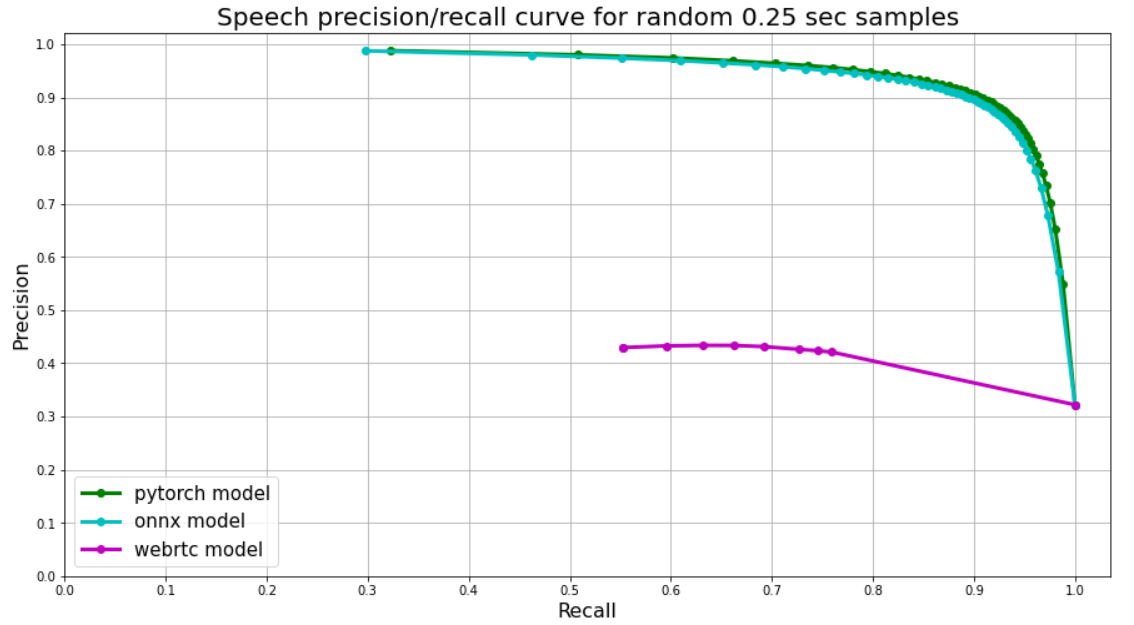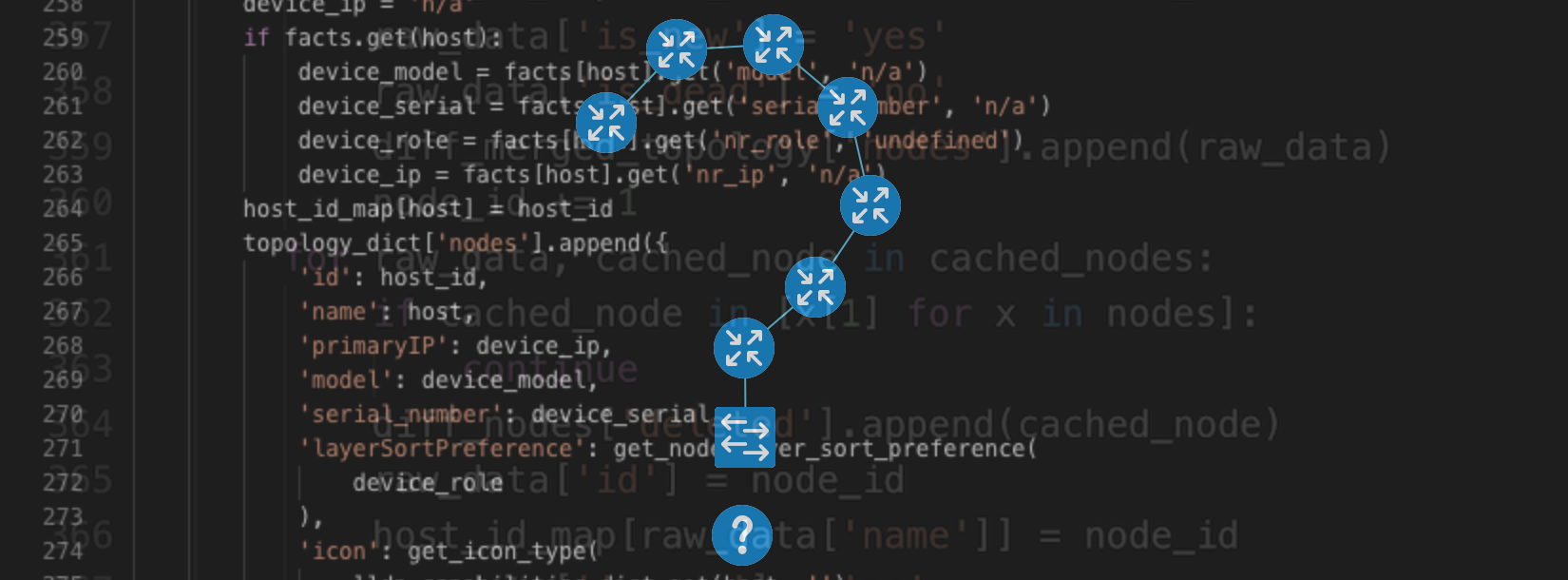Doing «Data Science» even if you have never heard the words before

There’s a lot of talk about machine learning nowadays. A big topic – but, for a lot of people, covered by this terrible layer of mystery. Like black magic – the chosen ones’ art, above the mere mortal for sure. One keeps hearing the words “numpy”, “pandas”, “scikit-learn” - and looking each up produces an equivalent of a three-tome work in documentation.
I’d like to shatter some of this mystery today. Let’s do some machine learning, find some patterns in our data – perhaps even make some predictions. With good old Python only – no 2-gigabyte library, and no arcane knowledge needed beforehand.
Interested? Come join us.
Top 10 Best Voice Chat APIs for Mobile and Web Apps

Voice calling plays a crucial role in personal and professional communication. Be it a friendly conversation among classmates or a business deal between companies – voice calling has been the most easy, convenient, and affordable way to communicate for decades. Thus, communication corporations and developers have brought in innovative ways to integrate their Application Programming Interfaces (APIs) and invent newer ways of voice communication.
What is one of the most common mistakes beginner developers make
It may seem that when you are a beginner, you'll do simple things only. No need to learn data structures and algorithms. No need to understand Big O notation, complexity and stuff like that.
This couldn't be further away from the truth!
In 2008, when I just started learning to program, I spent a lot of time reading books on PHP and MySQL. Months later, when I felt confident, I took my first freelance project. It was a real estate website. A simple one. I used a custom-made ORM and everything worked just fine!
When I released it, the search feature quickly became sluggish and made the website unusable.
I was wondering what the heck had happened. I figured out that database queries became very slow when there were over 200 real estate objects added to it.
This is it. What worked fine during testing did not work in real life.
I was a self-taught developer. I did not know how to measure if my project scaled well. I didn't even know that I had to do it.
I thought algorithms mattered only for launching a spaceship.
If I had some basic understanding of algorithms, I would have known that the more the input, the longer it takes.
I am not saying I would have come up with a robust solution as a junior, but I would have looked for a solution because I knew there would be a problem.
Please, don't make the same mistake!
Of course, data structures and algorithms are much more than that and they apply differently depending on what you work on.
But a basic understanding of data structures and algorithms is a must for every software developer.
Ant Design Component Customization and Bundle Optimization

I'm Ivan Kopenkov, a senior front-end developer at Mail.ru Cloud Solutions. In this article, I will tell you about the approaches we have used for the UI library components customization. You will also learn how to significantly decrease bundle size, cutting off all the unnecessary modules Ant Design takes there.
In our case, we are making wrappers for original Ant Design components inside the project, changing their appearance, and developing their logic. At the same time, we import both customized and original components right from the ant-design module. That saves tree shaking functionality and makes complex library components use our wrappers instead of original nested elements.
If you are already or about to use Ant Design, this article will provide you with a better and more effective way to do so. Even if you have chosen another UI library, you might be able to implement these ideas.
CLIP from OpenAI: what is it and how you can try it out yourself

Neural networks (NN) and computer vision models in particular are known to perform well in specific tasks, but often fail to generalize to tasks they have not been trained on. A model that performs well on a food data may perform poorly on satellite images.
A new model from OpenAI named CLIP claims to close this gap by a large margin. The paper Open AI wrote presenting CLIP demonstrates how the model may be used on a various classification datasets in a zero-shot manner.
In this article, I will explain the key ideas of the model they proposed and show you the code to use it.
Modern Portable Voice Activity Detector Released

Currently, there are hardly any high quality / modern / free / public voice activity detectors except for WebRTC Voice Activity Detector (link). WebRTC though starts to show its age and it suffers from many false positives.
Also in some cases it is crucial to be able to anonymize large-scale spoken corpora (i.e. remove personal data). Typically personal data is considered to be private / sensitive if it contains (i) a name (ii) some private ID. Name recognition is a highly subjective matter and it depends on locale and business case, but Voice Activity and Number Detection are quite general tasks.
Key features:
- Modern, portable;
- Low memory footprint;
- Superior metrics to WebRTC;
- Trained on huge spoken corpora and noise / sound libraries;
- Slower than WebRTC, but fast enough for IOT / edge / mobile applications;
- Unlike WebRTC (which mostly tells silence from voice), our VAD can tell voice from noise / music / silence;
- PyTorch (JIT) and ONNX checkpoints;
Typical use cases:
- Spoken corpora anonymization;
- Can be used together with WebRTC;
- Voice activity detection for IOT / edge / mobile use cases;
- Data cleaning and preparation, number and voice detection in general;
- PyTorch and ONNX can be used with a wide variety of deployment options and backends in mind;
Flutter 1.22 Launched: Will it be a Gain or Pain for Businesses?
Flutter with extensive support from iOS 14 and Android 11 released its newest version 1.22 in October last year. The release is primarily meant to focus on the fact that Android 11 and iOS 14 works great with Flutter.
Businesses are still in a dilemma to choose the best cross-platform framework between Flutter and React Native. But with the release of Flutter 1.22, they have realized that Flutter must be the top pick for them as well as the developers because it supports the new mobile OS versions.
The new version comes packed with iOS 14, Android 11, new i18, and l10n support. While these were the OS supports, there is much more it has to offer which includes Google Maps, WebView Plugins, a new app size tool, etc.
While the race to choose the best framework will continue to exist, here we will see how the Flutter 1.22 launch will be a boon for the businesses out there?
Passcode Data Protection by Using FPGA and Verilog

There are many situations when you need to protect your data, and different tools can be used to do that. For example, a safe. We develop a passcode data protection mechanism by using an FPGA board and Quartus Prime software. It allows demonstrating the basic concepts of a combination lock such as entering data, setting and checking a passcode, and displaying data.
Android interop with SWIG (a guide). From simple to weird. Part 2 — weird

This part covers the use of typemaps, complex & weird cases, and debugging suggestions. This part requires an understanding of Part 1 - usage of SWIG in simple cases.
This is a practical Android-first guide, with Android Studio project you can play with.
Active Restore: Beginning UEFI development
This is a translation with minor changes from the original post according to advice from comments.
Hello, folks! We have studied the boot sequence of the Windows operating system as part of a project from Acronis with students of Innopolis University. You can find more about the project here and there. There was an idea to execute the logic even before the boot sequence of the OS. Therefore, we tried to write something just to try, for a smooth immersion in UEFI. In this article, we will go through the theory and practice to read and write to disk in a pre-OS environment.

Android interop with SWIG (a guide). From simple to weird. Part 1 — simple

SWIG is a tool for generating cross-language interfaces - it provides interoperability of C++ and other languages (C++ and Java in our case). SWIG just simplifies and automizes cross-language interaction; otherwise, you may end up with thousands of lines of handwritten JNI code - but SWIG covers this for you.
This guide is for newbies (Part 1) and for those who experienced in SWIG (part 2). I'm starting from basic setup and usage and ending with complex & weird cases encountered in development. The latter cases are not so complex, rather usual for modern languages, which SWIG doesn't support yet (as lambdas).
This guide is practical. In opposition to overcomplicated huge-volume SWIG documentation, this guide is showing the cases practically. The bits developed by myself while working on the different projects or taken from StackOverflow. This guide allows you to quick-start an Android Studio project and giving practical examples of using SWIG. The link to the Android Studio project is here.
This guide is Android-first. The goal was to make it simple to onboard for Android developers. There are many articles about SWIG, but they are mainly for desktop Java applications, and it is quite an overhead to just try them on Android to check if the solution for the particular problem is working. While this guide includes an Android Studio project, with which you can play around instantly. Of course, all the information given here applies to any Java application.
Warning! I should warn you, that nowadays cross-platform development offers powerful tools. If you are developing a new application it is much more cost-efficient in practice to use ReactNative, Flutter of Kotlin-Native than the SWIG. While SWIG is more suitable to connect the C++ library or existing C++ application core.
GTK: The First Analyzer Run in Figures

For some people, the introduction of a static analyzer into a project seems like an insurmountable obstacle. It is widely believed that the amount of analysis results issued after the first run is so large that only two options seem reasonable: do not mess with it at all or refocus all people on fixing warnings. In this article, we will try to dispel this myth by implementing and configuring the analyzer on a GTK project.
Tarantool: an analyst's view
Many system analysts and engineers are keen to know:
- How to design the architecture of a trigger platform for real-time marketing?
- How to arrange a data structure that would be in line with the requirements of a marketing strategy for interacting with clients?
- How to ensure the stable operations of the system under very heavy workloads?
Such systems are based on technologies of high-load processing and Big Data analysis. We have accumulated considerable experience in these areas. Our expertise is in high demand on the market. I'm going to show how we help our customers to switch from off-line to on-line in their interactions with clients using Real-Time Marketing solutions based on Tarantool.
React Native: The First Choice of Mobile App Developers and Businesses
Let’s discuss why mobile app developers select React Native for application development over other cross-platform frameworks.
While few users continue to work with the Native development approach, those who want to succeed in their business have started exploring new opportunities. One such occasion in this technically advanced world is to turn toward cross-platform frameworks.
Out of 2.8 million apps available on the Google play store and 2.2 million apps in Apple App Store, there is a growing need for cross-platform applications. The significant advantage of a cross-platform mobile application is that it helps businesses save development costs. This is where React Native comes into action.
In the middle of this, if you are a businessman and thinking of hiring mobile app developers and there is a continuously running debate in your mind “React Native vs Native” then this post is for you.
9 Reasons Why Students Don’t Want You as a Teacher
Top-10 Bugs in Java Projects in 2020

The New Year is steadily approaching, therefore it's time to sum everything up. Continuing the tradition, we thought back to our articles about checking Java projects from the open-source world for this year and rated the top 10 most exciting bugs.
Tutorial. Deploying Django project to Heroku and storing static content on AWS S3: basic scenario from start to finish
This tutorial is aimed to help Django beginners who want to run a project on Heroku while storing static files on AWS S3. While being a major help for web developers, both services can be hard for beginners to set up correctly. I’ll admit these topics can be found covered separately elsewhere, but there are also some unaccountable nuances if you are trying to make both work in a single project.
Personally I couldn’t find a source which would not only cover Heroku deployment or S3 usage, but would address those nuances as well. Reading the manuals trying to figure out what do you have to do to deploy a project correctly might be an important part of learning, but it can also make you lose focus on what you are currently trying to study or, even worse, discourage you altogether. If this is your story, look no further. I hope instructions below will help you to deploy your project in a single track without having to consult with other resources.
The text is broken down into 3 logically distinct chapters: prerequisites for local Django app (a mini-chapter), integrating AWS S3 into your app for storing static files, and finally deploying to Heroku. You might not want to go through the entire process in one sitting. In the beginning of each chapter an approximate time required to complete chapter’s instructions will be noted so it is possible for the reader to plan ahead. I would advise not to break down a single chapter into multiple sittings, but if it is not possible, at least try to complete all work covered by a single sub-chapter section in a single go.
Links to official documentation will be provided in text in case you might need extra details on particular actions.
Text highlighted in yellow needs to be replaced in accordance with your settings/paths/accounts.
Visualizing Network Topologies: Zero to Hero in Two Days
Hey everyone! This is a follow-up article on a local Cisco Russia DevNet Marathon online event I attended in May 2020. It was a series of educational webinars on network automation followed by daily challenges based on the discussed topics.
On a final day, the participants were challenged to automate a topology analysis and visualization of an arbitrary network segment and, optionally, track and visualize the changes.
The task was definitely not trivial and not widely covered in public blog posts. In this article, I would like to break down my own solution that finally took first place and describe the selected toolset and considerations.
Let's get started.

Top-10 Bugs Found in C# Projects in 2020

This tough year, 2020, will soon be over at last, which means it's time to look back at our accomplishments! Over the year, the PVS-Studio team has written quite a number of articles covering a large variety of bugs found in open-source projects with the help of PVS-Studio. This 2020 Top-10 list of bugs in C# projects presents the most interesting specimens. Enjoy the reading!









